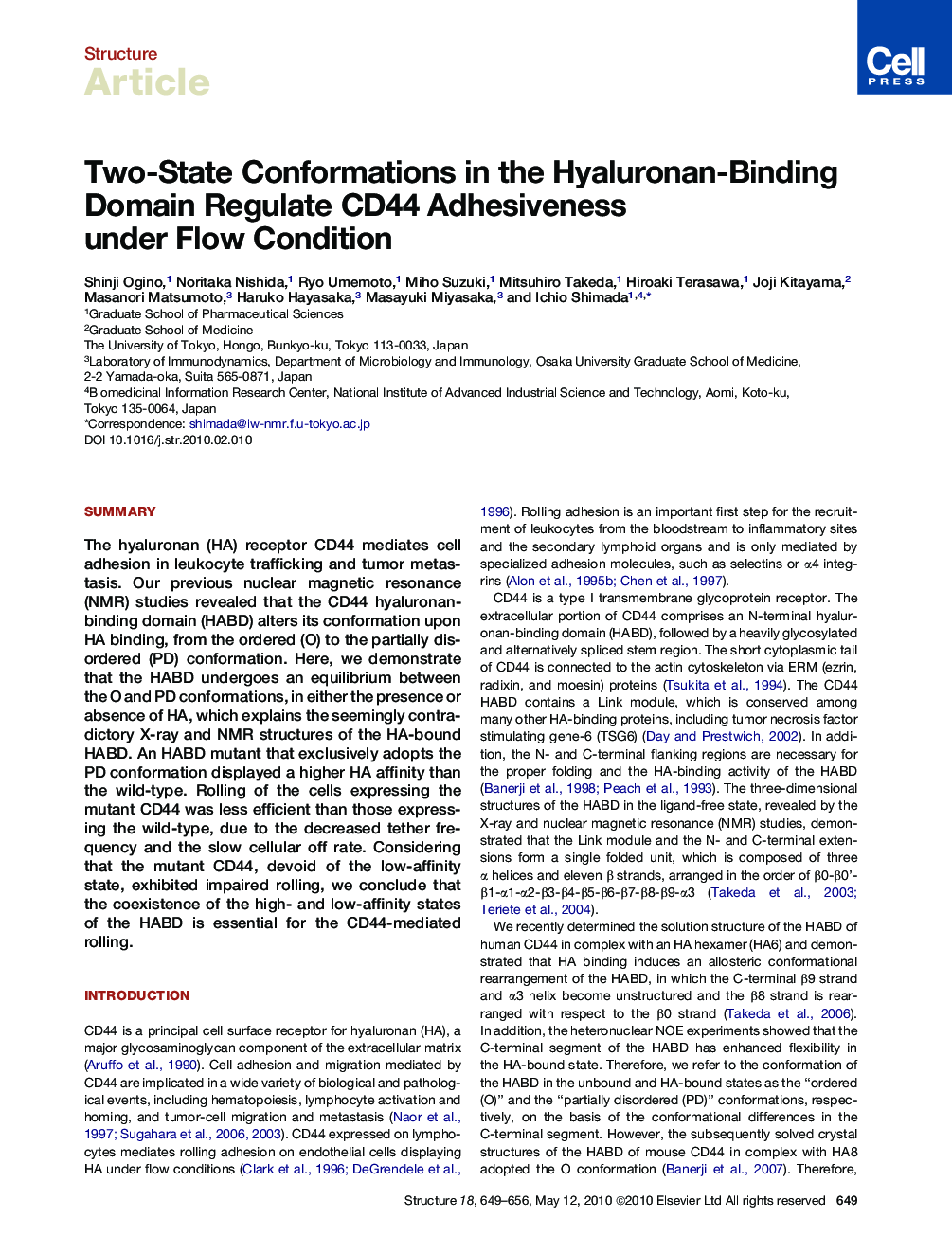| Article ID | Journal | Published Year | Pages | File Type |
|---|---|---|---|---|
| 2029895 | Structure | 2010 | 8 Pages |
SummaryThe hyaluronan (HA) receptor CD44 mediates cell adhesion in leukocyte trafficking and tumor metastasis. Our previous nuclear magnetic resonance (NMR) studies revealed that the CD44 hyaluronan-binding domain (HABD) alters its conformation upon HA binding, from the ordered (O) to the partially disordered (PD) conformation. Here, we demonstrate that the HABD undergoes an equilibrium between the O and PD conformations, in either the presence or absence of HA, which explains the seemingly contradictory X-ray and NMR structures of the HA-bound HABD. An HABD mutant that exclusively adopts the PD conformation displayed a higher HA affinity than the wild-type. Rolling of the cells expressing the mutant CD44 was less efficient than those expressing the wild-type, due to the decreased tether frequency and the slow cellular off rate. Considering that the mutant CD44, devoid of the low-affinity state, exhibited impaired rolling, we conclude that the coexistence of the high- and low-affinity states of the HABD is essential for the CD44-mediated rolling.
Graphical AbstractFigure optionsDownload full-size imageDownload high-quality image (135 K)Download as PowerPoint slideHighlights► CD44 HABD exists in two-state equilibrium either in the ligand-free or bound states ► Ligand-binding shifts the equilibrium from the O form to the PD form ► O and PD form represents low- and high-affinity states for ligand, respectively ► Two-state equilibrium is crucial for CD44-mediated cell rolling under flow condition
